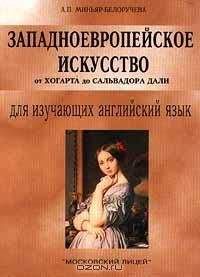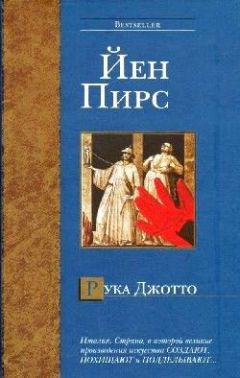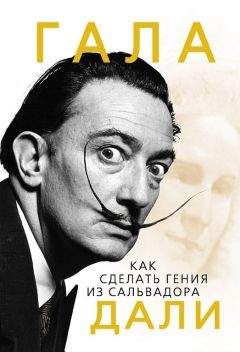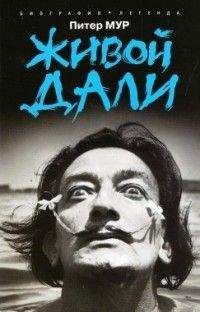For his rare figure pieces Cezanne chose subjects as quiet, impersonal, and remote as his still lifes. The Card Players, of about 1890-1892, shows three men, two of whom are clad in the blue smock of the farmer labourer, sitting around a table, while a fourth gazes downward, arms folded. The card game had been a favourite subject among the followers of Caravaggio. The quite figures contemplate the cards, themselves planes of colour on white surfaces. The Giotto-like folds of the smock of the man on the right echo in reverse those of the hanging curtain, locking foreground and background in a single construction. Yet the background wall fluctuates at an indeterminable distance like the sky in one of Cezanne's landscapes.
The full beauty of Cezanne's developed style is seen in his Woman with the Coffee-pot, of about 1895. Cezanne's planes of varying hues of blue and blue-violet have built majestic cylinders from the arms and a fluted column from the body. Stability is very important for Cezanne. Yet the door panels in the background tilt slightly to the left, compensating for the turn of the head toward the right, and the placing of the coffee-pot and cup. The adjustments are so exquisite that the removal of one element inflicts the whole picture a fatal blow. Cezanne's search for the exact plane of colour to fit into his structure was so demanding that at times the plane eluded him. Surprising elements are the mysteriously vertical spoon, and the cylinders of cup and pot, definitely out of drawing.
By the end of his life Cezanne's development toward abstraction became more evident. The large Bathers, of 1898-1905, is the culmination of his series of nude compositions. The figures were neither painted from life, nor in the open air (women in the eighteenth and nineteenth centuries did not bathe naked in streams and sun themselves on the banks). The fantasy gave Cezanne the materials with which to build a grand imaginary architecture, composed of strikingly simplified figures, overarching tree trunks, blue sky and white clouds – a modern cathedral of light and colour. The figures and heads remained schematic, features are suppressed and mouths are omitted entirely. The end result is a simplification of the human figure that had not been seen since the Middle Ages.
Make sure you know how to pronounce thefollowing words:
Cezanne; Provance; Aix; fatal; threshold; majestic; imaginary; indeterminable; Victoire
NotesMont Sainte-Victoire – «Гора Сент-Виктуар»
Card Players – «Игроки в карты»
Still life with Apples and Oranges – «Натюрморт с корзиной фруктов»
Woman with the Coffee-pot – «Женщина с кофейником»
Bathers – «Купальщицы»
TasksI. Read the text. Make sure you understand it. Mark the following statements true or false.
1. Cezanne was born in Normandy.
2. Cezanne's early works were Neo-classic.
3. Cezanne exhibited his paintings at the Salon in 1877.
4. Portraiture to Cezanne was second only to still life.
5. Cezanne developed abstractionism.
6. The figures in the Bathers were painted from life.
II. How well have you read? Can you answer the following questions?
1. What interested Cezanne at the beginning of his career? What sayings illustrate Cezanne's mature style?
2. What subject did Cezanne repeatedly study? What is depicted in the Mont Sainte-Victoire^. How did Cezanne produce the effect of durability and massiveness? What did Cezanne achieve from nature?
3. What is shown in the Still life with Apples and Oranges? What discrepancies are seen in this work of art?
4. What subject did Cezanne choose for his figure pieces? What is depicted in the CardPlayers? How did Cezanne arrange the figures?
5. Where is the full beauty of Cezanne's developed style seen? What dominates in this painting?
6. What makes the Bathers a masterpiece? Why is Cezanne claimed to be the father of modern art?
III. i. Give Russian equivalents of the following phrases:
to adopt the Impressionist palette; objects are identifiable; a colossal rock crystal of colour; colour construction; spheroid or cylindrical masses; psychological significance; to inflict a fatal blow; search for the exact plane of colour; a developed style; a visual threshold; a fluted column; indispensable elements; the formation of a new style; simplified figures.
ii. Give English equivalents of the following phrases:
неотъемлемый элемент; упрощенные фигуры; зрительный порог; зрелый стиль; формирование нового стиля; постоянно изучать; сферические и цилиндрические фигуры; излюбленная тема; цветовые формы; не поддающиеся определению предметы; овладеть палитрой импрессионистов.
iii. Make up sentences of your own with the given phrases.
iv. Arrange the following in the pairs of synonyms:
a) to inflict; fatal; indispensable; imaginary; to develop;
b) unreal; essential; to impose; to improve; doomed.
IV. Here are descriptions of some of Cezanne's works of art. Match them up to the titles given below.
1. Cezanne's planes have built majestic cylinders from the arms and a fluted column from the body.
2. The painting shows three men sitting around a table, while a fourth gazes downward, arms folded.
3. The fantasy gave Cezanne the materials with which to build a grand imaginary architecture, composed of simplified figures.
4. The table disappears under the tablecloth at one level.
5. Nothing indicates the time of the day or even the season.
a. Still life with Apples and Oranges
b. Bathers
c. Woman with the Coffee-pot
d. Mont Sainte-Victoire
e. Card Players
V. Translate the text into English.
До конца жизни Поль Сезанн подписывал свои произведения «ученик Писсарро», таким образом подчеркивая свою связь с импрессионистами. Сам Сезанн не принадлежал к этому направлению. У Сезанна нет картин сложного содержания. Наиболее сильная сторона таланта Сезанна – колорит. В передаче цветом реальности выявляются геометрические фигуры природных форм. «Все в природе лепится в форме шара, конуса, цилиндра; надо научится писать на этих простых фигурах, и, если вы научитесь владеть этими формами, вы сделаете все, что захотите». Взамен кажущейся случайности импрессионистов Сезанн принес чувство массы, выразительность образов.
Элементы абстрагирования, заложенные в искусстве Сезанна, позволили его последователям считать его основоположником абстракционизма.
VI. Summarize the text.
VI. Topics for discussion.
1. Cezanne's artistic concepts.
2. Cezanne and Cubists.
3. Cezanne's as the forerunner of Abstract painting.
Unit XIV Toulouse-Lautrec (1864-1901)
Henry Toulouse-Lautrec, born to one of the oldest noble families in France, broke both his legs in early adolescence, and they never developed properly. For the rest of his brief existence he remained a dwarf, alienated from his family's fashionable life. He learned to paint, and took refuge in the night life of Paris, which he depicted with consummate skill – scenes of cafes, theatres, and cabarets. All of his portrayals are prompted by the same uncritical acceptance of the facts of Parisian night life that he wished for his own deformity and found only in this shadowy world. At the Moulin Rouge, of 1892, was influenced by Degas, whom he deeply admired. Toulouse-Lautrec's line was sure, almost as much as that of his idol, but his tolerant humanity was entirely his own. The little artist can be made out toward the top of the picture in profile, just to the left of centre alongside his towering cousin and constant companion. It is significant that, to reinforce the psychological impact of the picture, Toulouse-Lautrec extended it on all four sides, particularly at the bottom and at the right. The plunging perspective of a balustrade in the added section pushes the little group huddled about the table into the middle distance, while it forces toward us with startling intensity the face of a heavily powered entertainer, so lighted from below that the shadows are green. Toulouse-Lautrec's smart and vivid drawing style, his brilliant patterning, and surprising colour contrasts were the dominant influence in Paris when in 1900, eight years after the picture was painted, the young Pablo Picasso arrived from Spain.
Make sure you know how to pronounce the following words:
Toulouse-Lautrec; Degas; Picasso; adolescence; alienated; balustrade; cabaret; cafe; dwarf; profile; psychological
NotesAt the Moulin Rouge – «Мулен Руж»
TasksI. Read the text. Make sure you understand it. Mark the following statements true or false.
1. Toulouse-Lautrec's parents were French aristocrats.
2. Toulouse-Lautrec took refuge in the wilderness.
3. Toulouse-Lautrec depicted poplars and cathedrals.
4. At the Moulin Rouge was influenced by Renoir.
5. Degas admired Toulouse-Lautrec's works of art.
6. Toulouse-Lautrec's line resembled that of Cezanne's.
II. How well have you read? Can you answer the following questions?
1. Why was Toulouse-Lautrec alienated from his family's fashionable life?
2. What did Toulouse-Lautrec like to depict? Why?
3. Who was Toulouse-Lautrec's idol?
4. What is represented in Toulouse-Lautrec's At the Moulin Rouge? How did the painter depict himself and his cousin in this picture?
5. What did Toulouse-Lautrec do to reinforce the psychological impact of this picture? What did Toulouse-Lautrec do to impress the observer?
6. What was the dominant influence in Paris in 1900? Who was influenced by Toulouse-Lautrec's works of art?
III. i. Give Russian equivalents of the following phrases:
for the rest of one's existence; to take refuge in; uncritical acceptance; to be influenced by; tolerant humanity; it is significant that; the psychological impact; at the bottom of the picture; surprising colour contrasts; the dominant influence; to extend the picture on all four sides; the plunging perspective; to light from below; drawing style; at the right.
ii. Give English equivalents of the following phrases:
неожиданные цветовые контрасты; раздвинуть картину с четырех сторон; терпимость; осветить снизу; психологическое влияние; глубинная перспектива; знаменательно то, что; основное влияние; в течение оставшейся жизни; найти убежище в; стиль рисунка; быть под влиянием.
iii. Make up questions of your own with the given phrases.
iv. Arrange the/allowing in the pairs of synonyms:
a) noble; existence; alienated; humanity; deformity; idol; tolerant;
b) ugliness; aristocratic; life; favourite; patient; hostile; kindness.
IV. Translate the text into English.
Анри Тулуз-Лотрека историки искусства называют постимпрессионистом. Он работал в основном в графике и оставил острые, доходящие до гротеска образы. Это в основном литографии, посвященные типажам парижской богемы. Тулуз-Лотрек делал плакаты с изображением знаменитых танцовщиц и певиц кабаре. В «Мулен де ла Галетт» и «Мулен Руж» художник экспрессивно и драматически изобразил веселье Парижа.
Многочисленные рисунки, эстампы, литографии свидетельствуют о Тулуз-Лотреке как о выдающемся рисовальщике XIX века.
V. Summarize the text.
VI. Topics for discussion.
1. Toulouse-Lautrec's style and characters.
2. Toulouse-Lautrec as a great draughtsman.
Unit XV Gauguin (1848-1903)
Paul Gauguin, a French painter, sculptor and printmaker, was a founder of modern art. A successful businessman without any artistic training Gauguin began painting as an amateur while working as a stockbroker. He soon met Pissarro and Cezanne, as well as the Impressionists. Gauguin absorbed their ideas and techniques and from 1879 to the last Impressionist exhibition in 1886 showed regularly with this group.
Paul Gauguin lived a life that reads like a classic tale of the misunderstood, and uncompromising artist, searching for verities against all odds. He was born in Paris and four years of his childhood lived in Peru (he was partly of Indian origin); six years of his youth he spent as a sailor and was incurably drawn to the exotic and the faraway.
For Gauguin painting itself became identified with his wanderlust and drew him away from all his daily associations. In 1883 he gave up his business career and his bourgeois existence to devote his life to art. Gauguin was convinced that European urban civilisation was incurably ill. His life was nomadic; he moved back and fourth between villages in Brittany and the island of Martinique. Impoverished, deadly ill, and in trouble with the law, Gauguin died on the Marquesas Islands.
Gauguin's departure from Western artistic tradition was prompted by the rebellious attitude that impelled his break from middle-class life. But Gauguin, too, was not an Impressionist at heart. He sought art using ideas rather than the tangible world as a starting point. In this he was influenced by the artist Emil Bernard and by the Symbolist poets Rimbault and Baudelaire. Joining him in renouncing naturalism were the Symbolists, and van Gogh.





